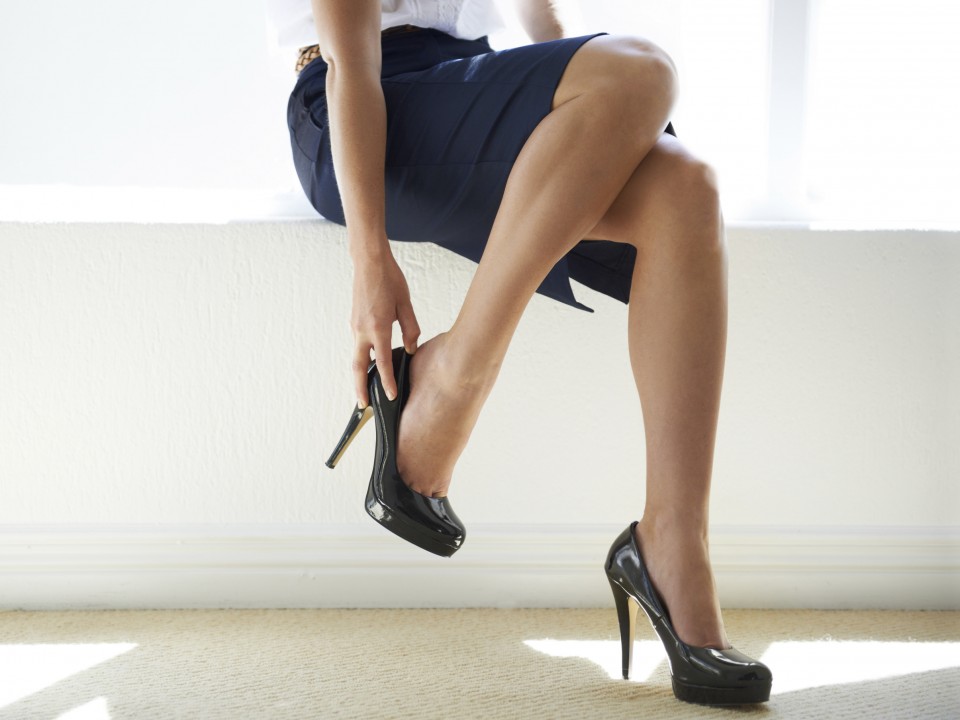High heels are often tagged as chic, sexy, and elegant. It goes without saying that a pair of high heels can complete your corporate attire. When you purchase a pair, the first thing you might take note of is the style (or maybe the brand). However, you should also put an equal amount of effort in considering your level of comfort.
More than chipped nail polish, there are several health problems associated with your five-inch stilettos. Your comfort level isn’t only influenced by the height of your footwear. The shoe shape also determines the position of your feet inside the shoes.
In reality, the wider the platform of your shoes, the more comfortable they are. It is preferable to stick to shoes with three-inch heels or less because the higher it is, the greater the stress not just on your feet but your whole body. And although most women only wear them occasionally, about 31% of them wear heels to work according to The Spine Health Institute.
What’s wrong with wearing high heels?
Maybe you’ve gotten used to the pain and lack of comfort when you wear it on a daily basis but it doesn’t mean that chronic wearing of high heels no longer has a negative effect on your body. The following conditions prove that you might want to re-think buying those five-inch pumps.
- Damaged toenails. All things considered, this should be the least of your worries but it’s still just as serious. Injury to your toenails might cause the nail to fall off entirely or worse, you might be at risk of infection especially if there’s an open wound. Without proper management, your nail might become thicker, discolored, and deformed.
- Because you’re basically tip-toeing while wearing heels, it’s often unavoidable to twist your ankle thus causing it to swell. It’s fairly common and if you can still tolerate the pain and manage to walk, then it’s only a mild case. You’ll know it’s severe when you can hardly walk and when you do, you wobble. There’s also some tenderness and bruising around the ankle.
- More prominent bunions. If you already have that bony bulging bump on your big toe, wearing heels can make them worse. Even if you’ve never had any bunion before, wearing high heels might still cause swelling and redness on your toe. You might also develop calluses or corns if the shoe fits very poorly.
- Musculoskeletal Pain. When you put on your high heels, your center of gravity shifts because your foot, pelvis, and leg tilt forward. You may hardly notice it but your whole body will try to keep your balance and the stress is now on your hips and knees. To keep you upright, you have to arch your lower back. These body adjustments can lead to body pain that ranges from mild to excruciating. The pain can manifest in different parts of your body like the balls of your feet, hip, knees, and lower back.
- Muscle weakness, pain, and spasms. From leg cramps to tight muscle contractions, wearing five-inch heels can have several long-term effects including losing the strength in your calves. You might also develop varicose veins when the blood flow to your lower extremities is already affected. Moreover, research has shown that chronic wearing of high heels can weaken your ankle strength and cause balance problems.
What can you do to relieve the pain and discomfort?
- Choose a comfortable pair of heels. Never force your foot into ill-fitting shoes. Your shoes shouldn’t be too small or too big. Keep in mind that your feet are at their biggest in the afternoon so that’s the best time to shop. Try to avoid wearing constrictive shoes with pointy toes.
- Opt for platforms and thicker heels. They may not be as fashionable as stilettos but are certainly more comfortable.
Minimize the use of high heels but if it’s unavoidable, as mentioned on aesthetic shapes try to take it off as often as you can and do stretching exercises of your feet, calf, and legs.
- Use gel inserts to help cushion the ball of your feet, increase comfort and prevent injury.
- Don’t forget to pamper your feet at least once a week. Add two cups of lemon juice to two cups of warm water and soak your feet in the solution. You can also use a pumice stone to rub your feet and apply a gentle massage.
- Do exercises which focus on your lower extremities specifically your feet and calves.
Wearing high heels is more than just subscribing to what’s fashionable; it’s also a way of expressing yourself and boosting your confidence. But while there’s nothing wrong with a little indulgence, you shouldn’t do it at a price like compromising your health. So before you buy your next pair of heels, consider the risks and what you can do to minimize them.

